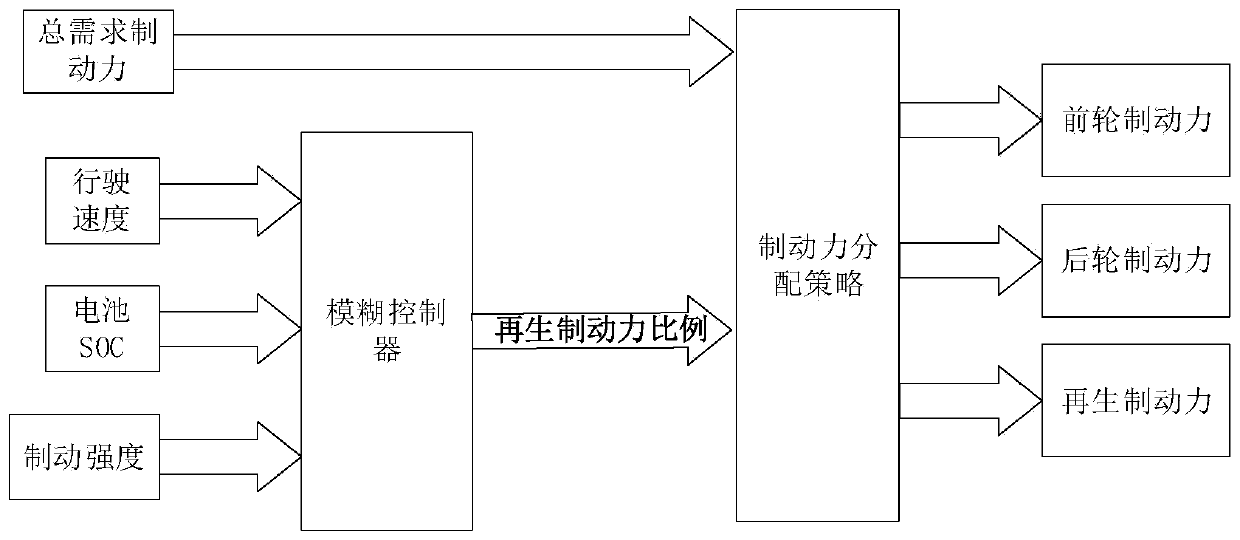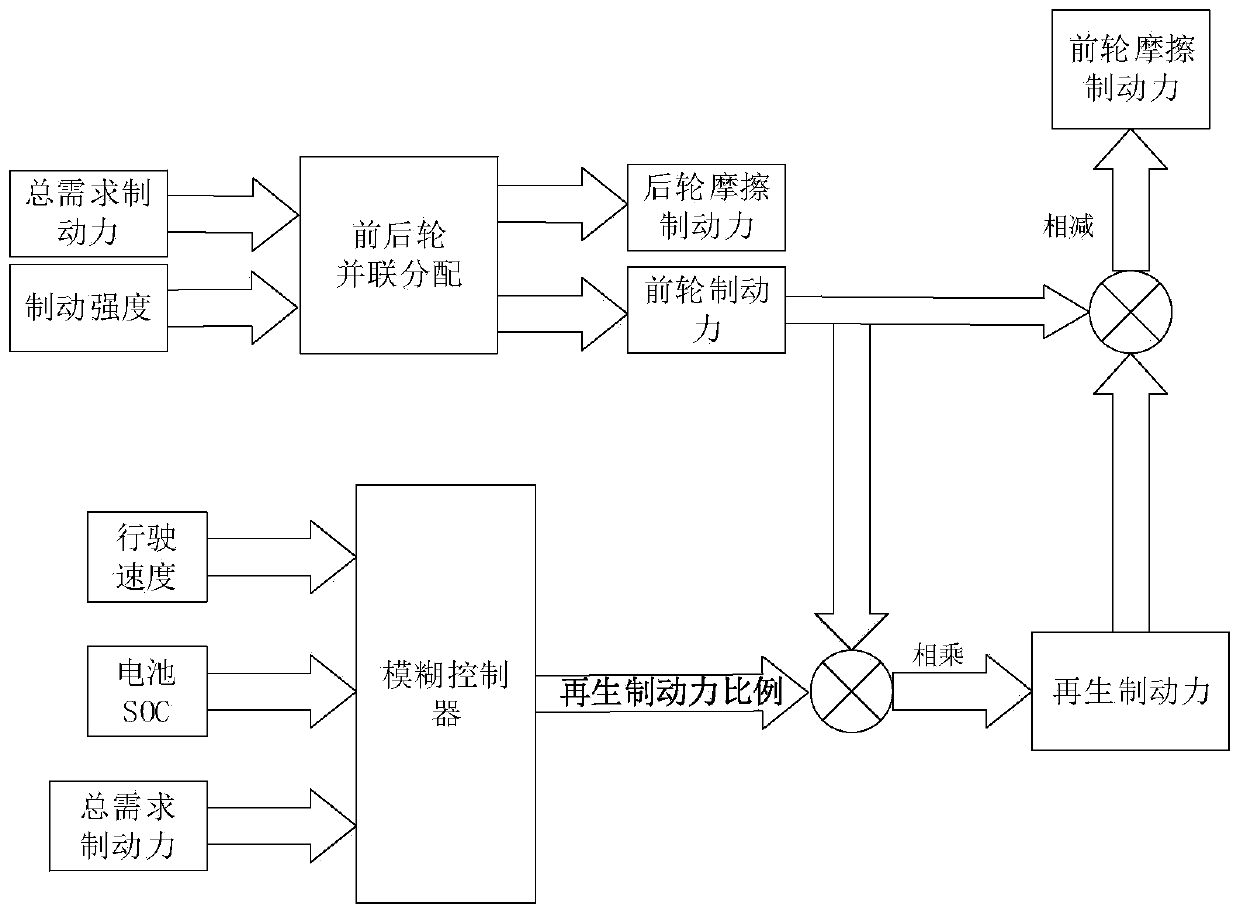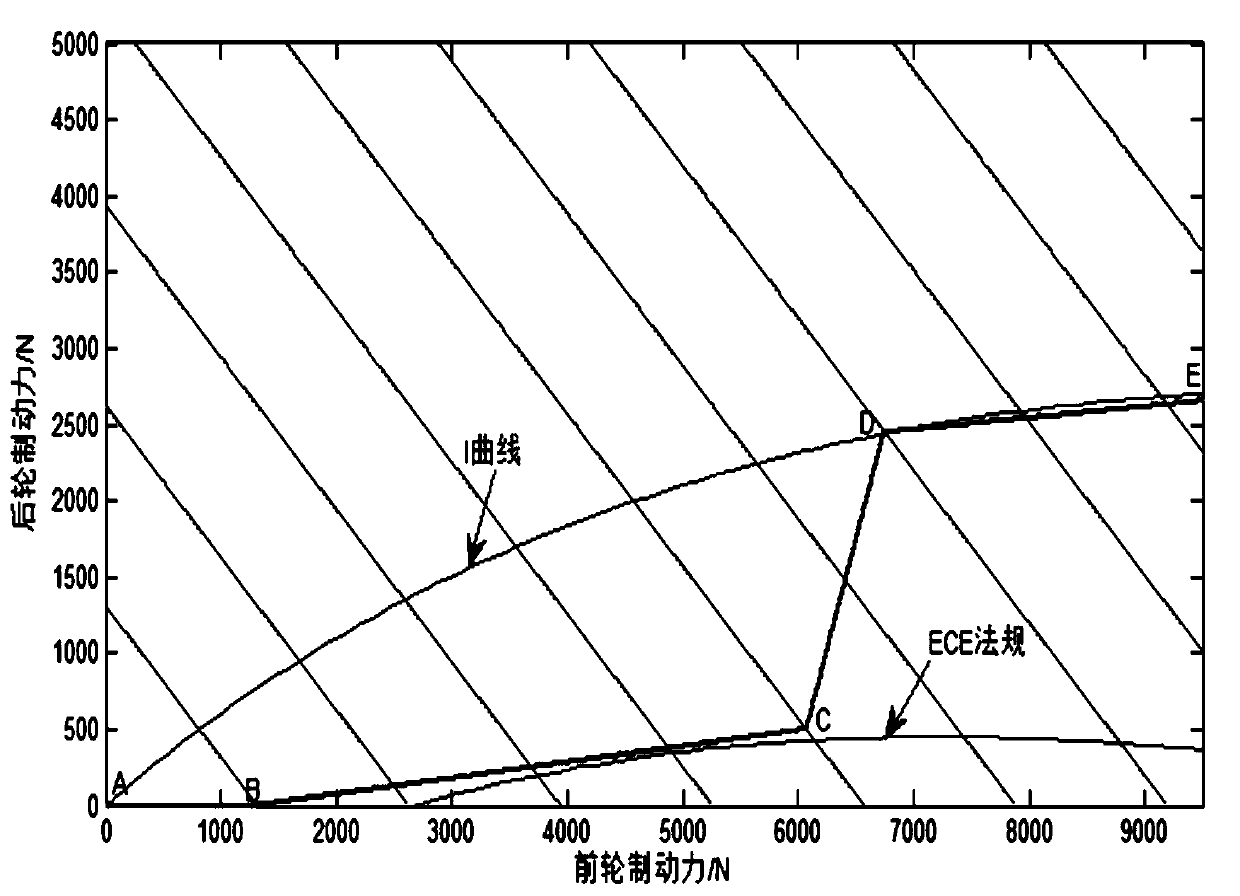Braking force distribution method of electromobile
A braking force distribution, electric vehicle technology, applied in the direction of brakes, etc., can solve the problems of increasing control complexity, reducing the safety of electric vehicles, and prone to locking of wheels.
- Summary
- Abstract
- Description
- Claims
- Application Information
AI Technical Summary
Problems solved by technology
Method used
Image
Examples
Embodiment Construction
[0047] Energy regenerative braking on electric vehicles brings two basic problems to the design of its braking system: one is how to distribute the required braking force between regenerative braking and friction braking, and to regenerate braking as much as possible energy; the second is how to distribute the total braking force on the front and rear axles to achieve stable braking performance. Normally, regenerative braking is only effective for the drive shaft. In order to recover as much braking energy as possible, the motor must be controlled to produce a specific amount of braking force. In order to meet the vehicle deceleration command from the driver, there must be sufficient total braking force at the same time.
[0048] Taking the ADVISOR2002 pure electric vehicle model as an example, the regenerative braking of electric vehicles is affected by many factors such as motor power, energy storage state of charge SOC, maximum bus current, and braking intensity. Therefore...
PUM
 Login to View More
Login to View More Abstract
Description
Claims
Application Information
 Login to View More
Login to View More - R&D
- Intellectual Property
- Life Sciences
- Materials
- Tech Scout
- Unparalleled Data Quality
- Higher Quality Content
- 60% Fewer Hallucinations
Browse by: Latest US Patents, China's latest patents, Technical Efficacy Thesaurus, Application Domain, Technology Topic, Popular Technical Reports.
© 2025 PatSnap. All rights reserved.Legal|Privacy policy|Modern Slavery Act Transparency Statement|Sitemap|About US| Contact US: help@patsnap.com



